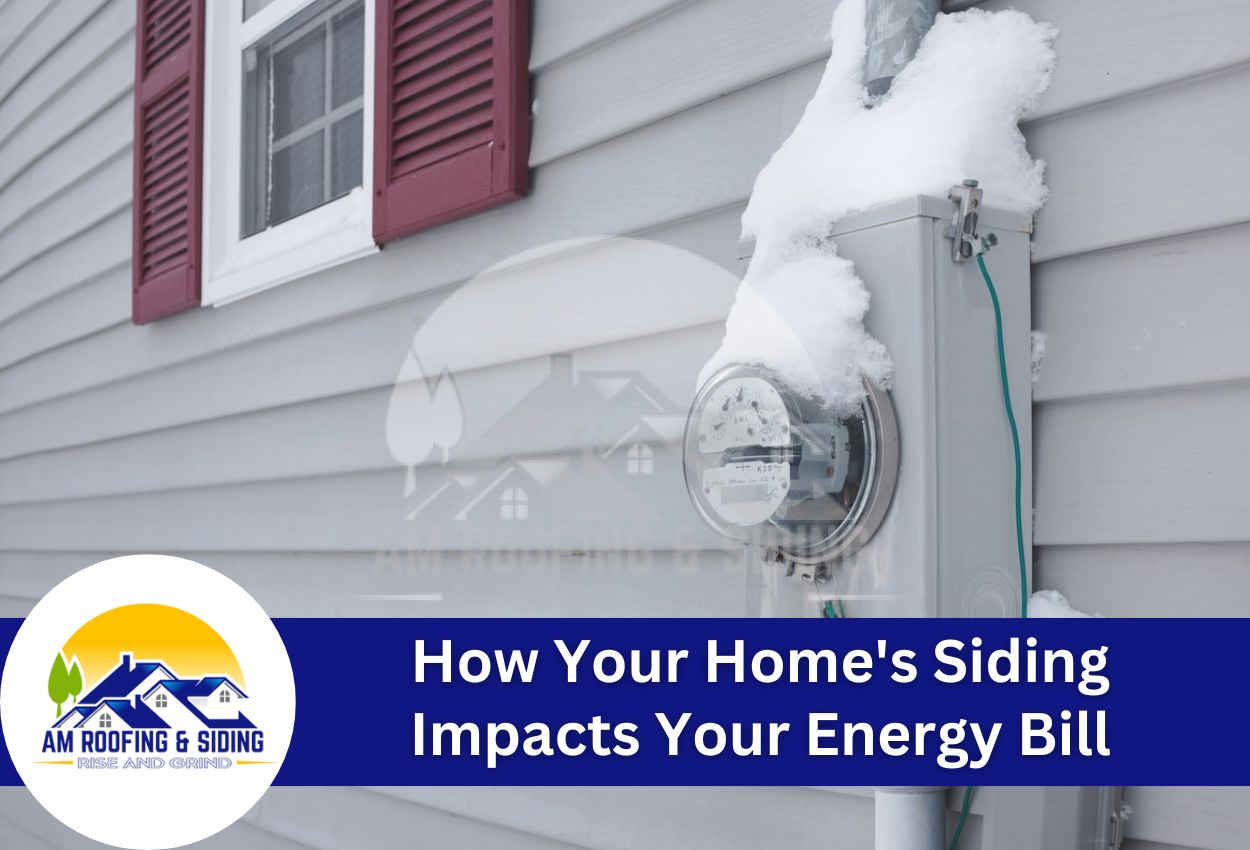Siding is way more important than just being an outer shell that provides color and style to your home, it also has a direct hand in energy efficiency. The right siding can act as a protective barrier, shielding your home from the weather and helping to maintain a consistent internal temperature. This, in turn, can lead to significant savings on your heating and cooling costs.
In the following sections, we will explore various factors that impact how siding contributes to energy savings. From the benefits of energy-efficient siding to choosing the best materials for insulation, and understanding the influence of siding on heating costs, this discussion will provide you with valuable insights. Additionally, we’ll offer practical advice on how to enhance your home insulation by strategically buying and maintaining siding.
Whether you’re building a new home or considering upgrades to your existing one, understanding how siding affects your home’s energy efficiency is essential. This knowledge will not only help you make informed decisions, it will also contribute to long-term savings and environmental sustainability.
Understanding What Makes Siding Energy Efficient
With the right siding, homeowners can enjoy a comfortable living environment while reducing their energy consumption and utility bills. But what exactly makes siding energy efficient?
Siding that’s energy efficient acts as a barrier against external temperature changes, helping to keep warm air inside during the winter and cool air during the summer. By minimizing the need for continuous heating and cooling, your energy output will be less, as will your bills.
Siding seals out air leaks, keeping warm or cool air within the home, and reducing the need to run your HVAC to keep up with changing temperatures. Depending on your siding material, such as metal, you may even gain the benefit of a reflective surface that bounces UV rays back out into the atmosphere.
As you assess your siding options, think about both the material and installation quality to ensure maximum energy efficiency for your home.
Benefits of Energy-Efficient Siding
Investing in energy-efficient siding offers notable savings on heating and cooling bills, making it an economically wise choice for homeowners. By improving thermal insulation, energy-efficient siding minimizes the need for artificial heating and cooling. This reduction in energy consumption directly translates into lower utility bills, especially in regions with extreme weather conditions like Central Ohio.
Aside from the economic benefits, choosing energy-efficient siding also brings several environmental advantages. Materials used in greener siding options are often more sustainable and have a lower environmental impact. For example, fiber-cement siding is made from natural materials like sand and cellulose fibers, which are both abundant and sustainable. This type of siding not only insulates homes effectively, it also contributes to a reduced carbon footprint.
Energy-efficient siding can enhance a home’s durability by protecting against weather-related damage, which leads to less frequent replacements and repairs. This long-term sustainability aspect further supports environmental conservation efforts by reducing waste and the demand for raw materials.
Overall, the benefits of installing energy-efficient siding are twofold: homeowners can enjoy significant savings on energy costs while also contributing to a greener construction process.
Best Siding Materials for Insulation
When considering siding materials, homeowners have several options. Each material offers different benefits in terms of energy efficiency, so knowing what options are available to you is important in order to be able to determine which one suits the needs of your home the best.
One of the most popular choices is vinyl siding due to its cost-effectiveness and the enhanced insulation it can provide if fitted with an insulated backing. Fiber-cement siding, on the other hand, is highly durable and offers better insulation than standard vinyl siding, making it a good choice for energy savings and temperature control. Wood siding is the most naturally insulating siding option and its classic appearance is favored by many. However, natural wood typically requires more maintenance and can be more vulnerable to harsh weather and pests.
For homeowners in Central Ohio, insulated vinyl and fiber-cement are the top choices. These materials not only withstand the region’s variable weather conditions, they also contribute significantly to a home’s overall energy efficiency. By reducing thermal bridging and enhancing the exterior envelope, these siding options help keep indoor temperatures more consistent without over-reliance on heating and cooling systems.
Ultimately, the choice of siding material can have a substantial impact on a home’s energy consumption. By opting for insulated vinyl or fiber cement, homeowners can achieve better insulation for their homes, leading to lower energy bills and improved comfort year-round.
The Impact of Siding on Heating Costs
With the winters in Central Ohio, homeowners need to consider how their siding will impact their heating bills in particular. Having the right siding provides you with enhanced insulation, which plays a crucial role in maintaining a home’s temperature during the cold winter months. This improved thermal efficiency means the heating system has to work less, resulting in lower energy consumption and significant savings on utility bills.
Local case studies illustrate the benefits of upgrading siding for energy savings. For instance, a homeowner in Central Ohio reported a 30% reduction in their heating bills after replacing their old, inefficient siding with new, insulated vinyl siding. This type of siding not only helped retain heat during the winter, it also kept the home cooler in the summer, demonstrating year-round benefits.
Another example involves a residential project where fiber-cement siding was installed, leading to improved thermal stability inside the home. The residents noticed that their indoor environment remained more consistent despite fluctuating external temperatures, which drastically reduced their reliance on heating systems during colder periods.
These examples highlight the importance of choosing the right siding material and proper installation to maximize energy efficiency. For homeowners in Central Ohio, investing in quality siding not only enhances comfort, it also contributes to substantial energy savings over time.
Ways to Enhance Your Home’s Insulation Beyond Siding
Improving your home’s insulation quality isn’t just about upgrading the material inside your walls. You can significantly enhance your home’s energy efficiency, especially when combining enhanced insulated siding with other insulation practices.
In addition to choosing energy-efficient siding materials, homeowners can adopt several strategies to retrofit their existing siding for better insulation. Sealing gaps and cracks between siding panels, for instance, can prevent air leaks that lead to higher heating and cooling expenses. Adding a house wrap or rigid foam board insulation under new siding can also provide an extra barrier against temperature changes, further boosting energy savings.
When planning a siding upgrade or installation, consider consulting with a professional to ensure that all parts work together to fortify your home’s insulation. This comprehensive approach not only enhances the effectiveness of your siding, it also contributes to a significant reduction in your overall energy expenditure.
The Selection and Installation Process
When selecting siding, consider materials known for their insulation properties, such as insulated vinyl, fiber-cement, or certain types of wood siding. Each material offers distinct benefits in terms of durability, maintenance requirements, and its ability to provide insulation.
While insulation is important, you also want to factor in your budget and the type of style you want to create around your home.
Professional installation is crucial to ensure that your siding functions effectively. Even the most energy-efficient siding will underperform if it’s not installed correctly. Hiring experienced professionals for installation can prevent issues such as gaps and leaks that compromise the siding’s insulative properties. Additionally, regular maintenance is necessary to sustain the energy-saving benefits of your siding. This includes routine inspections and repairs to address any damage that could affect the siding’s performance over time.
Enhance Your Home’s Energy Efficiency with AM Roofing & Siding
Upgrade your home’s siding with AM Roofing & Siding to experience significant energy savings. Our energy-efficient siding options are designed to regulate thermal comfort and reduce heating and cooling costs.
Call (740) 974-8268 to schedule a consultation and learn how the right siding materials can enhance your home’s insulation, leading to long-term savings and environmental benefits. Take the first step in improving your home’s energy efficiency with AM Roofing & Siding today.

